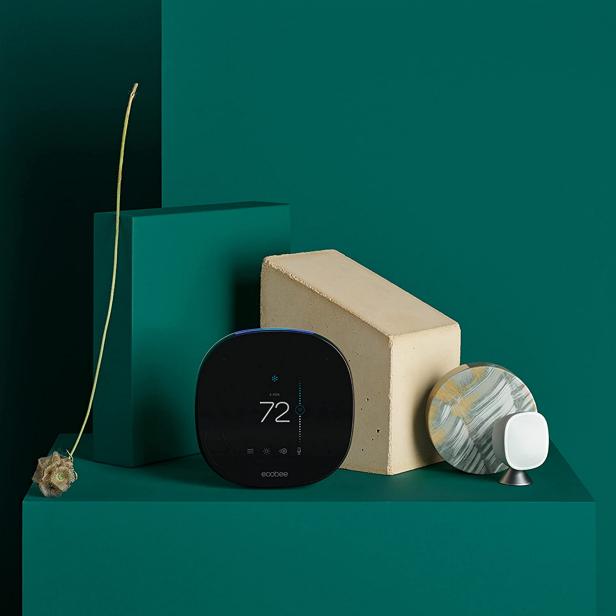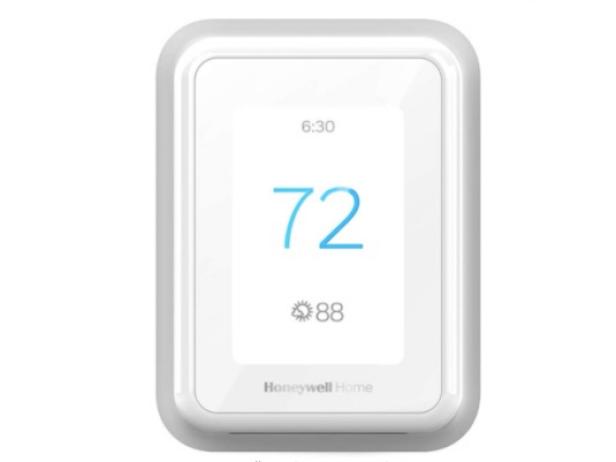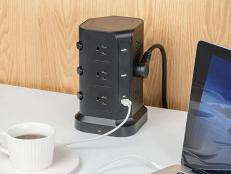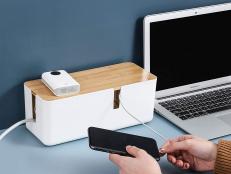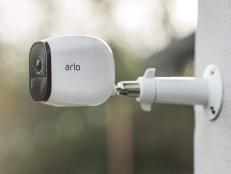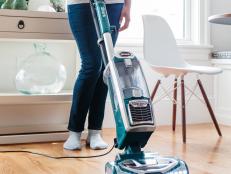4 Best Smart Thermostats of 2024, Tested and Reviewed
Save time, energy and money in your home by upgrading to a smart thermostat you can control from anywhere.

Our Top Smart Thermostat Picks:
- Best Overall: Google Nest Learning Thermostat
- Runner-Up: Ecobee Smart Thermostat With Voice Control
- Best Budget: Ecobee Lite Smart Thermostat
- Best for Multiple Zones: Honeywell Home T9 Smart Thermostat
Smart home products, from security systems to robot vacuums to smart speakers, have grown more and more popular in recent years thanks to the convenience they offer. Many smart devices primarily provide you the luxury of time saved, whether it's time saved from a robot vacuuming your house or a smart speaker searching for the weather forecast or a recipe instead of doing it yourself. But one smart device that saves you time, energy and money is a smart thermostat. Smart thermostats offer practical conveniences like being able to control your home’s temperature from the comfort of your bed via a smart app or voice control as well as the ability to reduce your home’s energy consumption and power bills. You can save as much as 10 percent a year on heating and cooling by simply turning your thermostat back 7°-10°F for eight hours a day from its normal setting, according to the U.S. Department of Energy, and it's much easier to consistently do that with a smart thermostat with automated eco modes, self-learning technology and schedules you can control from your phone. Most top-rated models cost between $80-$250 and are easy to use via a connected app, and some even offer voice control integration with other home devices like Alexa, HomeKit, Google Assistant, etc. Beyond price, here are the primary factors to consider when choosing a smart thermostat:
- Compatibility With HVAC System: The last thing you want when purchasing something to make your life easier is to realize the smart thermostat you bought won't work with your current HVAC system. If you have multiple climate-controlled zones in your home, you will need a thermostat for each zone. The age of your existing HVAC system will affect whether your system is compatible with the new thermostat. Most top brands offer an online questionnaire to help you determine if your current system is compatible with a device before you buy, which we found extremely helpful in our testing process and highly recommend doing.
- Ease of Installation: Once you know a thermostat is compatible with your system, most are very easy to install yourself in less than 30 minutes, but the manufacturer's online questionnaire should also help you determine if hiring a pro is a better option for you. Most smart thermostats work best if your unit has a "C" wire, though some brands offer workarounds if yours doesn't. If you're ever unsure about compatibility, it's never a bad idea to hire a pro, which one of our editors, who lives in an older house and isn't super handy, decided to do. It will likely cost $100-150, but, even with that added fee to consider, a smart thermostat could still be worth the investment for the convenience and energy savings over time. If you go the DIY route, most kits come with everything you need, including a screwdriver and detailed instructions via an app.
- Self-Learning Technology: While more control via a smart app means you can save energy by turning off your system while you're away or starting up your system a few minutes before you return home, some apps feature learning technology that streamlines the process and helps save energy with less manual control required.
- Energy Rating: Speaking of energy, it's best to look for a smart thermostat that is Energy Star certified. You can even input your zip code on the Energy Star website to check for any rebate deals you may be eligible for from power companies in your area. All of our recommendations are Energy Star certified.
- Voice Control Capabilities: If you're someone who already has a voice assistant like Alexa or Google Assistant, the ability to integrate your thermostat with voice control may be an important feature to look for as not all smart thermostats offer voice control capabilities. If you're fine primarily using the app or the thermostat itself, you can save some money by forgoing this added feature.
First introduced in 2011, the Google Nest Thermostat is perhaps the most popular smart thermostat and our best overall pick because it checks all of the boxes. It installs in less than 30 minutes (we timed it!), features self-learning technology to make it more efficient over time and offers voice command capabilities via a connected Amazon Alexa or Google Assistant device. The sleek, circular design comes in seven finishes, ranging from brass to stainless steel, and both the thermostat interface and connected app are intuitive and easy to use. You can use eco mode to minimize when the system kicks on based on customizable benchmark temperatures, and the app offers energy monitoring. You can also purchase sensors, sold separately, to add in problem spots in your home that need extra monitoring. Nest says this model is compatible with HVAC systems in 95 percent of homes, but you can confirm yours is by taking this easy questionnaire before purchasing.
Our Editor Says: "As someone who loves the convenience of smart products but is intimidated by the setup process, the Nest thermostat couldn't be simpler. The installation instructions are crystal clear, and the app and thermostat display are intuitive. I also love the energy monitoring, and the unique finish options available. While all of the designs are sleek and modern, I love that the brass finish blends in better than an all-white or all-black display would in the hallway of my 1939 home where the old doorknobs are also brass."
Another solid choice is Ecobee's Smart Thermostat with Voice Control, especially if voice control and integration with other smart devices are important to you. With a speaker built-in, this thermostat works with Amazon Alexa systems without the need for an extra Echo speaker. It's also compatible with Apple HomeKit, Google Assistant and SmartThings. While the Nest thermostat doesn't come with any sensors, this Ecobee model does come with one, and you can add up to 32 sensors for one thermostat. If you have a problem area in your home, the sensor can ensure everywhere, not just where the thermostat is, reaches your preferred temperature. This Ecobee thermostat doesn't have as advanced learning technology as the Nest thermostat, but it does offer scheduling and three easy, adjustable modes: Home, Sleep and Away. They are automatically programmed into the system, and you don’t have to adjust them if you don’t want to. For example, Sleep is set between 65°F and 82°F, meaning the system will only kick on if it gets above or below those temperatures. Installation for this model also takes less than 30 minutes, and the app and display interface are both super easy to use. Check your HVAC system's compatibility with this quick questionnaire.
Our Editor Says: "I’m not the most technologically savvy person, and I got the hang of the features relatively quickly. It makes me feel like I live in an HGTV Smart Home."
This Ecobee Lite Smart Thermostat offers all of the great benefits of our runner-up pick, minus voice control capabilities. If voice control isn't important to you, cutting out this feature cuts the cost down and makes this pick a great overall value. The Ecobee Lite doesn't come with a sensor, though you can still buy them separately and use them with this model, but if you live in a small home, you probably don't need extra sensors.
Our Editor Says: "There is a lot I like about it. It is sleek and looks really lovely, it functions well and gives friendly reminders. It's compatible with an Apple Watch and iPhone. It’s the smart gadget I think all people should consider, even if they aren’t techy."
This thermostat from Honeywell also works extremely well with sensors, sold separately, making it a great buy for people with problem areas or rooms that need extra monitoring. With a range of 200 feet, each sensor is able to read motion, temperature, and humidity, and you can have up to 20 Room Sensors throughout your home. Though it doesn't work with Apple HomeKit, the Honeywell T9 does offer voice control integration with Amazon Alexa, Google Assitant, SmartThings and Microsoft Cortana. You can adjust the geofencing capabilities, like radius and alerts, so your thermostat adjusts based on your home and away schedule. You can also create a vacation period to keep your home at a consistent temperature for a certain period of time while you’re away. Beyond that, you can program and adjust schedules, change your room priorities, change the mode and adjust the current temperature. While Honeywell does say this is a DIY thermostat and can usually be installed by the homeowner — check your system's compatibility with this quiz — our tester, who is admittedly not handy and lives in an older home, opted to hire a pro to install for $100. The installation did take only 30 minutes for the pro, and our tester said setting up the app was super easy.
Our Editor Says: "I purchased a single sensor with the thermostat to put in my son’s nursery. His room was formerly a carport, so it struggles to maintain warmth in the winter and cool air in the summer. His monitor doesn’t provide an accurate temperature reading, so we’ve loved being able to monitor his room at night from our phones or from the thermostat itself. I also love that I can adjust the temperature by voice via Alexa or from my phone while in bed or curled up on the sofa. When it’s cold, and I’m warm under a blanket in the middle of a Netflix binge-fest, I don't have to move a muscle to make things warmer."







